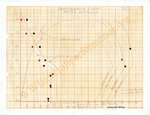P-39 Expert
Non-Expert
I can't tell if you are agreeing with me or not.There is a small thing on the P-47, called the R-2800. As conceived, it was to offer an extra 3/4s of power vs. V-1710. Price being weight and size, not just of the engine, but of necessary plumbing, turbo and intercooler. Big fuel tank is needed, since big power needs a lot of fuel. Now that we're to install a 2000 HP engine on a fighter, a suitable armament s needed - 8 HMGs. As before you know it, the fighter gets big & heavy.
We can recall that P-43 was smaller than Hawker Hurricane or F4F, neither of the 3 being slim. On the other hand, Hellcat didn't needed a turbo to be as big as P-47.

